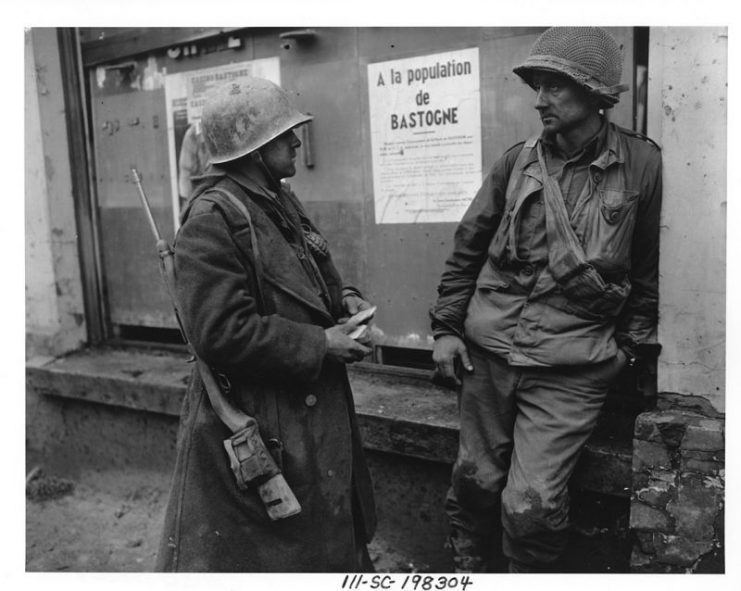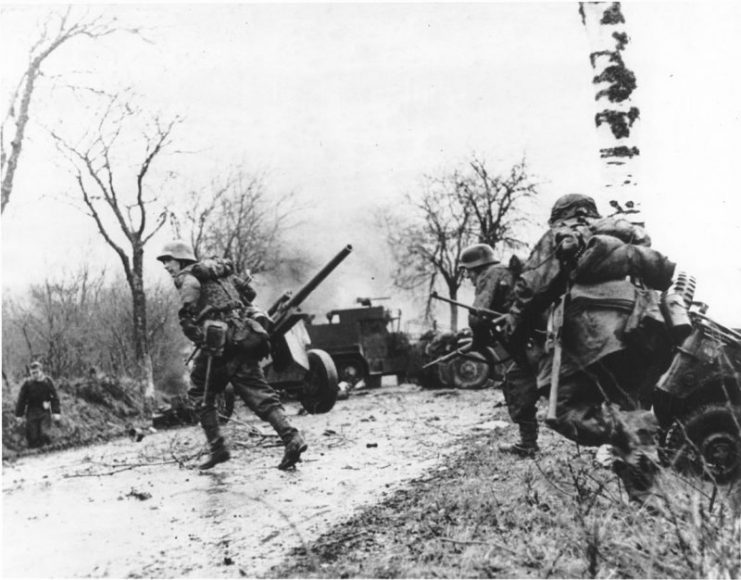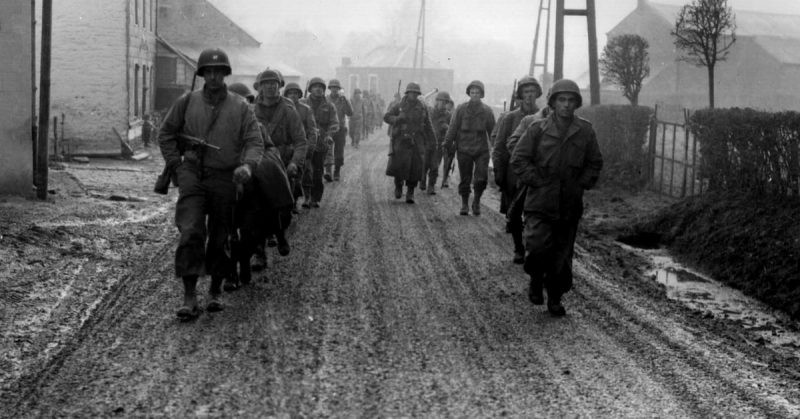By August 1944, the tide of WWII had long since turned for the Third Reich. They had been summarily ousted from their previously dominant position in France by the combined American, British and Canadian forces. Also on their eastern front, they faced a fully mobilized offensive from an enraged, implacable Soviet Union. In the unenviable position of fighting a war on two fronts, Hitler needed a decisive victory to turn the tide back in his favor.
Enter the Ardennes forest. Many elements went into Hitler’s decision to make it the site of what would turn out to be his final push. Firstly, he had had some victory there in 1940 when General Heinz Guderian used it to perform a successful two-week march to the sea. And secondly, the defending Americans stationed there were as yet untested and untried for the rigors of fighting a winter war.
Hitler’s plan was for the 5th and 6th Panzer armies – consisting of seven armored, one parachute and eight Volksgrenadier (People’s Grenadier) Divisions – to attack the American defenders en route to the Belgian port of Antwerp, and the sea. In theory, it would split the Allied line. Two other German armies would then protect the northern and southern flanks of the German advance. Hitler hoped his plan would stall the Allies progress so that he could focus on his eastern front. But first, they had to win the Battle of the Bulge.

Historians, movie-moguls, and audiences love the exploits of the 101st Airborne, dramatized as it was in the Band of Brothers. However, if it were not for the exploits of the little known 110th Infantry (Regimental Combat Team), 28th Infantry division, and their impassioned stand against the German forces in the Ardennes, the 101st would likely not have been able to participate in the Siege of Bastogne.
Walter S. Zapotoczny Jr, a former member of the 110th, brought home some black and white images, that accurately captured the drama of this story in a book entitled ‘The 110th Holds in the Ardennes.’
Deployed along the St. Vith-Oiekirch Highway – known to the Americans as “Skyline Drive” a hard-surfaced road that ran along the Luxembourg-German border and overlooked the Our River and Germany to the east, and the Clerf River and Luxembourg to the west – they were not suspecting an attack.
Colonel William Hurley, the Commander of the 110th Infantry, allowed his forward positions to relax during the hours of darkness. On the evening of December 15, 1944, his forces numbered 5,000 men. What he did not know was that across the Our River, Heinrich von Luttwitz had assembled his entire XLVII Panzer Corps, outnumbering his men by a ratio of 5-1. The Germans planned to crush the 110th’s positions in one day.

The Germans began their military bombardment shortly before dawn. They had been busy for hours, paddling across the Our River in rubber boats and moving steadily towards their objectives to the west, until they were within 300 yards of the American defenses at Marnach, Hosingen, Holzthum, Weiler, Munchausen, and Clervaux. The 110th immediately fired back, forcing the Germans to retreat. This pattern was repeated across the 110th’s entire front.
Despite their early successes, there was no way that the 110th could hold its positions against such a numerically superior force. What they accomplished along the banks of the Our River, was to slow the German advance, keeping Luttwitz from achieving his objectives and frustrating the Fuhrer’s forces for eight days. The heroism of the 110th was not without cost.
When the German army finally managed to fight its way through the Ardennes forest, and lay siege to the city of Bastogne, 2,700 men had been lost. Only five hundred of the 110th’s original complement of 5,000 men were able to continue the fight.
